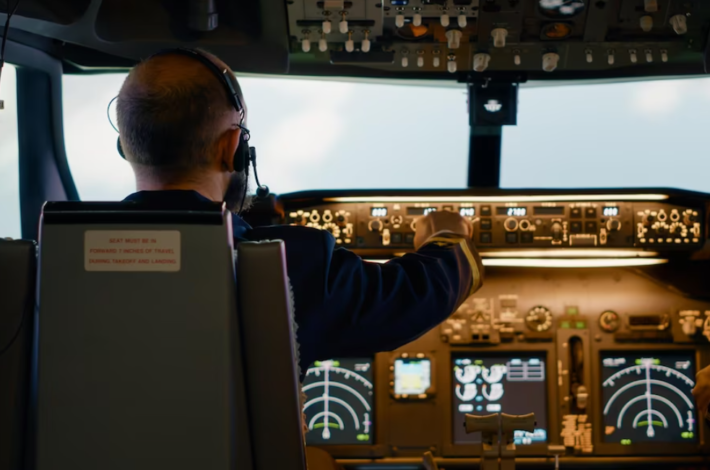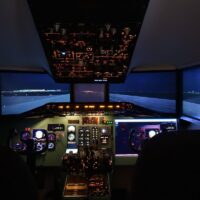
Earning a private pilot license is an exhilarating achievement that unlocks a vast array of possibilities, granting individuals the extraordinary freedom to navigate the skies in their own aircraft for personal purposes. While the training required for a private pilot license may not be as extensive as that for advanced ratings, it still entails formal instruction to meet specific time and knowledge prerequisites.
The initial phase of private pilot training revolves around the essential aspect of ground school. For those curious about the duration of ground school, this discussion aims to provide insight into the minimum hour requirements and other crucial factors that warrant consideration. By exploring these elements, one can develop a clearer understanding of the significance and breadth of ground school in the pursuit of a private pilot license.
Ground school serves as the fundamental educational foundation for aspiring pilots. It is a structured learning program that covers a wide range of theoretical knowledge necessary for safe and proficient flying. The curriculum typically includes subjects such as aerodynamics, aircraft systems, meteorology, navigation, airspace regulations, aviation law, and flight planning. The aim is to equip future pilots with the theoretical understanding and practical knowledge needed to navigate the skies confidently and responsibly.
Understanding Ground School in Pilot Training
In pilot training, the significance of ground school cannot be emphasized enough, as it serves as the foundation of knowledge and understanding for aspiring pilots. There are two primary types of pilot schools: Part 61 and Part 141. Part 141 schools are specifically mandated by the Federal Aviation Administration (FAA) to offer an approved ground training course. At J.A. Flight Services, we take great pride in being an FAA-approved Part 141 flight school that provides a comprehensive and meticulous ground school program.
Ground school represents the initial phase of flight training, with a predominant focus on theoretical aspects rather than practical flight lessons. During this stage, you will delve into a wide array of aviation-related subjects, including aerodynamics, airport regulations, aircraft instruments, and meteorology. The main objective of ground school is to equip you with the necessary knowledge and understanding to successfully pass the relevant knowledge tests required for obtaining a pilot license. It is important to note, however, that ground school is just one component of the overall pilot training curriculum, which also encompasses practical flight lessons and hands-on experience in the cockpit. By combining the theoretical foundation acquired in ground school with the practical skills obtained during flight training, you will develop into a competent and capable pilot, ready to embark on thrilling aviation adventures.
Ground School Duration for a Private Pilot License
Understanding the time commitment involved in obtaining a private pilot license is crucial for aspiring aviators. To become licensed, candidates must successfully complete an aeronautical knowledge test that covers various topics including aerodynamics, FAA regulations, navigation, and radio communication procedures.
According to federal regulation Appendix B to Part 141 – Private Pilot Certification Course, the FAA specifies a minimum of 35 hours of instructional time for ground school specifically designed for airplane pilots pursuing a private pilot license. It’s worth noting that the required hours may differ for pilots seeking licenses in other aircraft categories, such as 15 hours for glider pilots or 10 hours for balloon pilots. In reality, most ground school courses exceed the minimum requirement of 35 hours to ensure effective imparting of the necessary knowledge.
The educational program for obtaining a private pilot license typically spans around four weeks. This duration is often associated with a structured curriculum delivered in a traditional classroom setting. However, an alternative option is to complete the necessary training through an FAA-approved home study program, which provides more flexibility in scheduling. In this case, students can learn at their own pace, potentially extending the duration beyond the estimated four-week timeframe. It’s important to note that comprehending the extensive information covered in the program may require several months or even up to a year for students who choose a self-paced study approach.
Upon completing the training, aspiring pilots undergo a written examination to assess their knowledge of the relevant subjects. While the significant commitment of time and effort devoted to the program may seem daunting, thorough preparation significantly increases the likelihood of passing the examination on the first attempt, minimizing the need for retakes.
An Overview of Ground School: What to Expect as a Student
Embarking on aviation training as a student pilot raises questions about the curriculum and topics covered during this vital phase. The Federal Aviation Administration (FAA) has established minimum requirements for approved training courses to ensure thorough instruction for aspiring pilots.
While certain schools under Part 61 regulations may not be required to provide formal ground training, it is essential for students to receive and document instruction from an authorized instructor or complete a designated home study course prior to applying for a pilot certificate.
For schools operating under Part 141 regulations, the FAA mandates the inclusion of specific subjects in their curriculum. These subjects contain:
- Familiarity with applicable Federal Aviation Regulations (FARs) that pertain to the privileges, limitations, and conduct of private pilots during flight operations;
- Comprehension of accident reporting requirements as outlined by the National Transportation Safety Board (NTSB), ensuring the ability to accurately report incidents or accidents in accordance with established guidelines;
- Understanding and utilization of relevant sections of the “Aeronautical Information Manual” (AIM) and appropriate Federal Aviation Administration (FAA) advisory circulars (ACs) that provide guidance on various aspects of aviation operations;
- Proficiency in reading and interpreting aeronautical charts for visual flight rules (VFR) navigation. This includes the use of pilotage (navigating by visual references), dead reckoning (estimating position based on previous known data), and navigation systems to ensure accurate and safe navigation;
- Mastery of radio communication procedures to facilitate effective and secure interactions between pilots and air traffic control (ATC). This encompasses the ability to adhere to standard phraseology, understand ATC instructions, and effectively communicate intentions and requests;
- Recognition of critical weather situations both on the ground and in flight. This includes the ability to identify and avoid wind shear, access aeronautical weather reports and forecasts, and apply this knowledge in practical decision-making during flight operations;
- Knowledge and application of safe and efficient aircraft operation, including collision avoidance techniques, wake turbulence recognition and avoidance, and understanding the impact of density altitude on takeoff and climb performance;
- Competence in performing weight and balance computations to ensure aircraft stability and safety, considering factors such as passenger and cargo distribution, fuel loads, and center of gravity limitations;
- Understanding the principles of aerodynamics, powerplants, and aircraft systems, providing insight into the mechanics of flight and the operation of various aircraft components;
- For those pursuing an airplane or glider category rating, familiarity with stall awareness, spin entry, spins, and spin recovery techniques to ensure safe flight operations and the ability to respond effectively in critical situations;
- Development of aeronautical decision-making skills and sound judgment to assess and mitigate risks during flight operations, ensuring safe and efficient outcomes;
- Thorough pre-flight preparation, including gathering essential data on runway dimensions, takeoff and landing distances, meteorological reports and predictions, and fuel requirements. Additionally, considering potential contingencies and strategizing for flight interruptions or delays to enhance overall flight safety and preparedness.
Alt: copilot flying airplane in the cockpit
Tips for Aspiring Pilots
Embarking on ground school is a crucial step towards obtaining a private pilot license. While the FAA mandates a minimum of 35 hours of ground school for this license, it’s important to remember that success in flight training extends beyond meeting the minimum requirement. To maximize your learning experience and set the foundation for a successful aviation journey, consider the next tips:
| Step | Description |
|---|---|
| Familiarize Yourself with the Aircraft | Read the pilot’s operating handbook or airplane flight manual specific to the aircraft you plan to fly. Gain valuable knowledge about aircraft terminology and systems, which will be crucial for future flights. |
| Take Homework Seriously | Approach ground school homework assignments with dedication and complete them on time. Treat them as important learning opportunities to fully grasp the material and be well-prepared for upcoming lessons and assessments. |
| Seek Early Access to Course Materials | Inquire with your ground school about the possibility of accessing course materials prior to the official start of classes. This enables you to review the materials in advance and familiarize yourself with the concepts. By doing so, you establish a solid foundation for a smoother learning experience during classes. |
Conclusion
In conclusion, the educational program for aspiring pilots is an essential stepping stone in their journey toward becoming proficient aviators. This comprehensive guide has provided valuable insights into the purpose, curriculum, and expectations of this program. By undergoing this training, individuals gain the theoretical knowledge, regulatory understanding, and decision-making abilities required for safe and skilled flight operations.
Throughout the program, students delve into various subjects, including aerodynamics, navigation, weather interpretation, and communication procedures. This immersive learning experience establishes a strong foundation that serves as the bedrock of their aviation education. Additionally, the program prepares students to successfully complete the aeronautical knowledge test, a significant milestone on their path to obtaining a pilot license.
This educational program serves as a launching pad for dreams to take flight. It instills the principles, regulations, and critical thinking skills necessary for aspiring aviators to confidently and competently navigate the skies. As students complete their training, they are equipped with the necessary tools to transition to the practical phase of their aviation journey, bridging the gap between theory and application.

